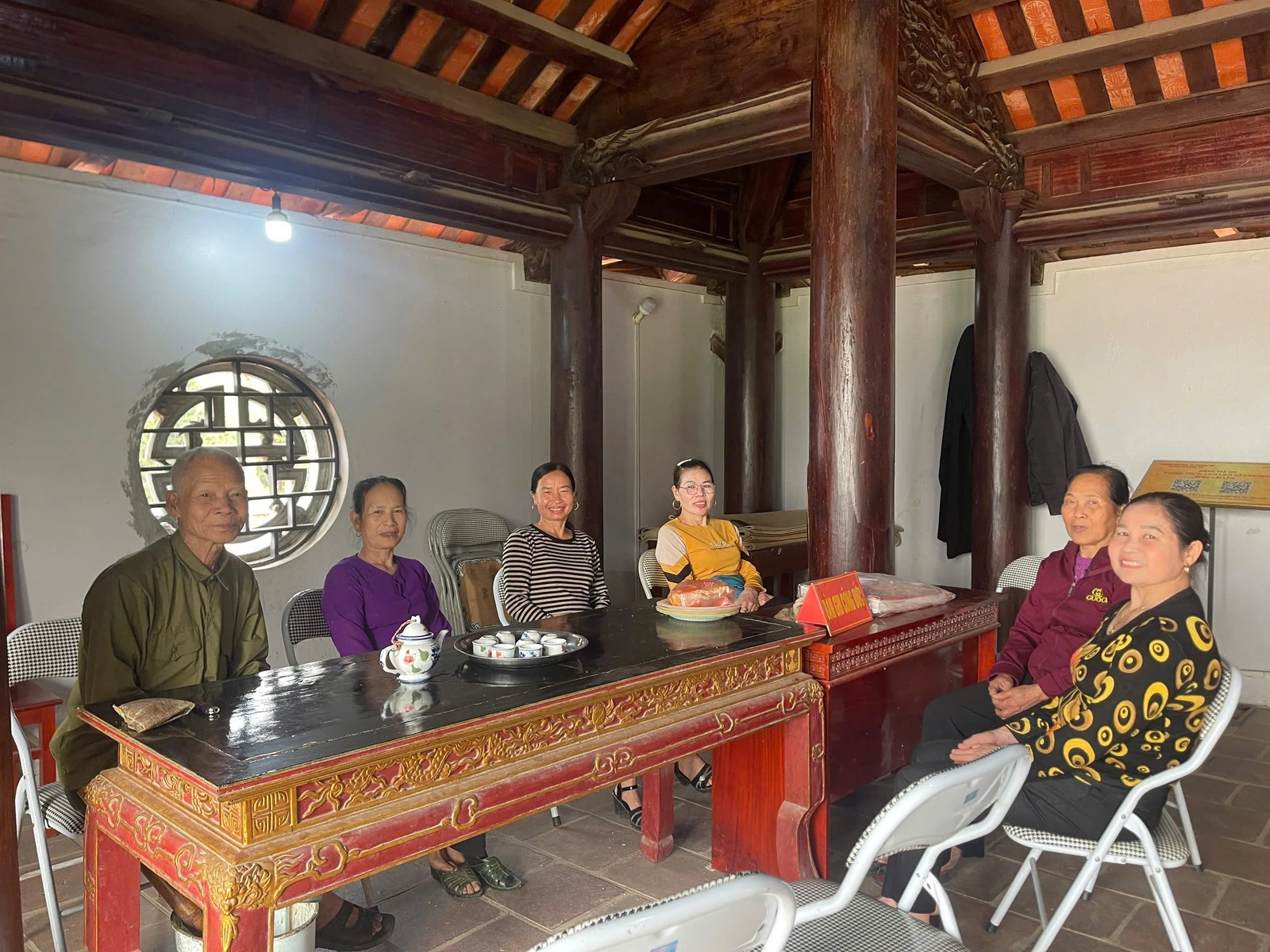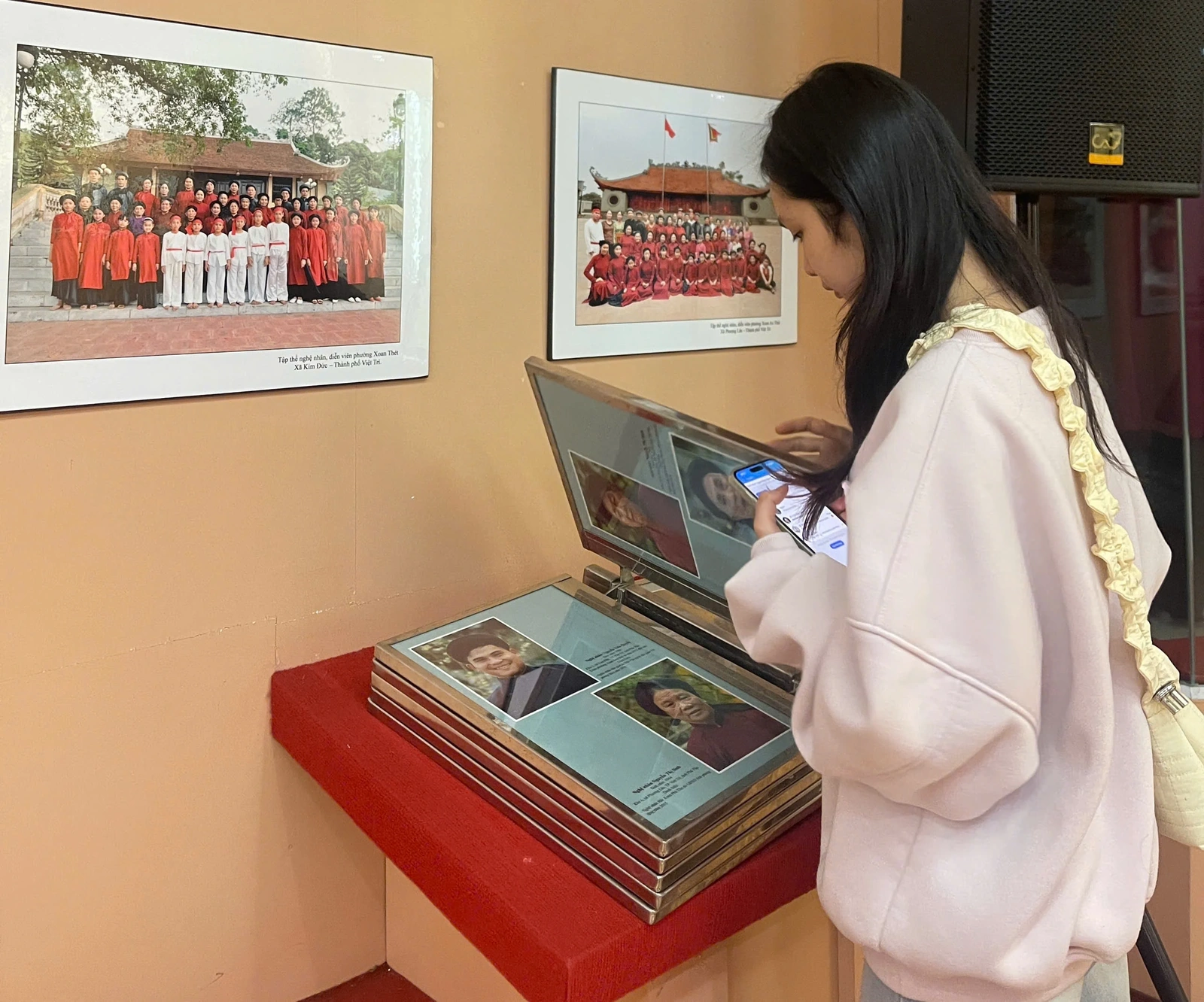{title}
{publish}
{head}
Each year, as the Hung Kings’ Commemoration Day approaches, the Hung King Temple becomes a sacred convergence point for tens of thousands of visitors from around the world. Amid this vibrant pilgrimage, Lai Len Temple in Kim Duc Commune, Viet Tri City—known as the cradle of Xoan singing—comes alive with the rhythms of drums and the lyrical melodies of this ancient art form. Here, artisans are diligently rehearsing, preparing their finest performances for the festival held at the sacred Hung King Temple.
According to legend, Lai Len Temple served as the first large performance space in Vietnam during the era of Van Lang. It was here that young women first sang Xoan melodies to honor the Hung Kings and pray for abundant harvests. Over the course of millennia, Lai Len Temple has remained a hub for the transmission and preservation of this unique tradition, with generations of artisans passing down its artistic and spiritual values.
Today, the temple is not only a place of worship but also a cultural landmark that attracts tourists and folk art enthusiasts alike. Especially during festival season, the temple grounds offer a glimpse into the traditional cultural life of the Ancestral Land, recreating moments of historical and spiritual significance.
In celebration of this year’s Hung Kings’ Commemoration Day and the Ancestral Land Culture and Tourism Week, Xoan guilds are actively rehearsing, preparing costumes and props, and getting ready to welcome visitors. For the artisans, this is more than a performance—it is a chance to introduce the world to an invaluable piece of intangible cultural heritage.

Artists are on duty, ready to serve tourists.
“We are always on duty during this sacred time,” shared Nguyen Xuan Hoi, head of the Phu Duc Xoan Guild and custodian of Lai Len Temple. "Xoan singing has existed since the time of the Hung Kings, closely tied to the springtime ritual of singing in worship. Each performance is a way for us to continue a thousand-year tradition. To sing Xoan at Lai Len Temple during the National Commemoration is not only an honor, but also a sacred duty—one that connects us to our ancestors and their legacy."
Visitors to Lai Len Temple can immerse themselves in the spiritual beauty of live Xoan performances while exploring the temple’s dedicated exhibition space. This exhibition, built with an investment of over 4 billion VND, showcases invaluable artifacts, documents, and historical records—offering a deeper understanding of Xoan singing’s origins and evolution.

Xoan singing at the art exhibition corner at Lai Len Temple.
At a recent visit, Dinh Thu Phuong, a fourth-year student at Hanoi University of Business and Technology, reflected on her first encounter with a live Xoan performance. "I grew up in the Ancestral Land, so I’ve learned about Xoan singing in school. But this was the first time I experienced it in person—listening to the artists, seeing the exhibition, and standing where it all began. It gave me a more complete appreciation of this art form, and made me love traditional culture even more. I hope many young people like me will also be inspired to help preserve and promote Xoan singing."
To ensure solemn, high-quality performances, the Lai Len Temple management board and the Xoan guilds have worked closely to organize the space and schedule performances throughout the festival. Local residents have also contributed by cleaning and decorating the temple grounds—creating a welcoming, respectful environment for all visitors.
As the echoes of Xoan singing bridge the past and the present, artisans continue to teach the next generation—tirelessly nurturing this thousand-year-old cultural treasure. The legacy of Phu Tho’s Xoan singing is not just a memory but a living, breathing rhythm of the ancestral land. And so, it is not only the artisans, but all of us—descendants of this heritage—who must come together to preserve and promote the enduring spirit of Xoan.
Phan Hue

baophutho.vn In Tu Vu Commune, where the Muong ethnic group predominates, gongs and drums are cultural symbols inseparable from the spiritual and material...

baophutho.vn In the era of integration and development, amidst the proliferation of modern industrial products, Phu Tho Province has managed to preserve...

baophutho.vn Phu Tho is a land rich in cultural and historical heritage, home to numerous artifacts, relics, and national treasures of exceptional value....

baophutho.vn On December 8, 2017, at its 12th session, the UNESCO Intergovernmental Committee for the Safeguarding of Intangible Cultural Heritage...

baophutho.vn Situated in the fertile land of Binh Nguyen (Vinh Phuc), the Huong Canh Communal House Complex — comprising Huong Canh, Ngoc Canh and Tien...

baophutho.vn For generations, whenever people mention Huong Canh Town (former Binh Xuyen District, Vinh Phuc Province), now Binh Nguyen Commune of Phu Tho...

baophutho.vn Kha Cuu Commune was formed by merging three former communes: Dong Cuu, Thuong Cuu, and Kha Cuu, with the Muong ethnic group accounting for over...

baophutho.vn Perched atop Tram Linh Hill, Quoc Te Temple in the former Di Nau Commune — now Tho Van Commune — has long been regarded as a solemn and...

baophutho.vn Located in Giap Lai Commune, this ancient communal house is revered by local residents as the “soul of the Muong village.” It is dedicated to...

baophutho.vn The Thai people are the largest indigenous ethnic group in Mai Chau District, now residing mainly in communes such as Mai Chau, Bao La, Mai Ha,...